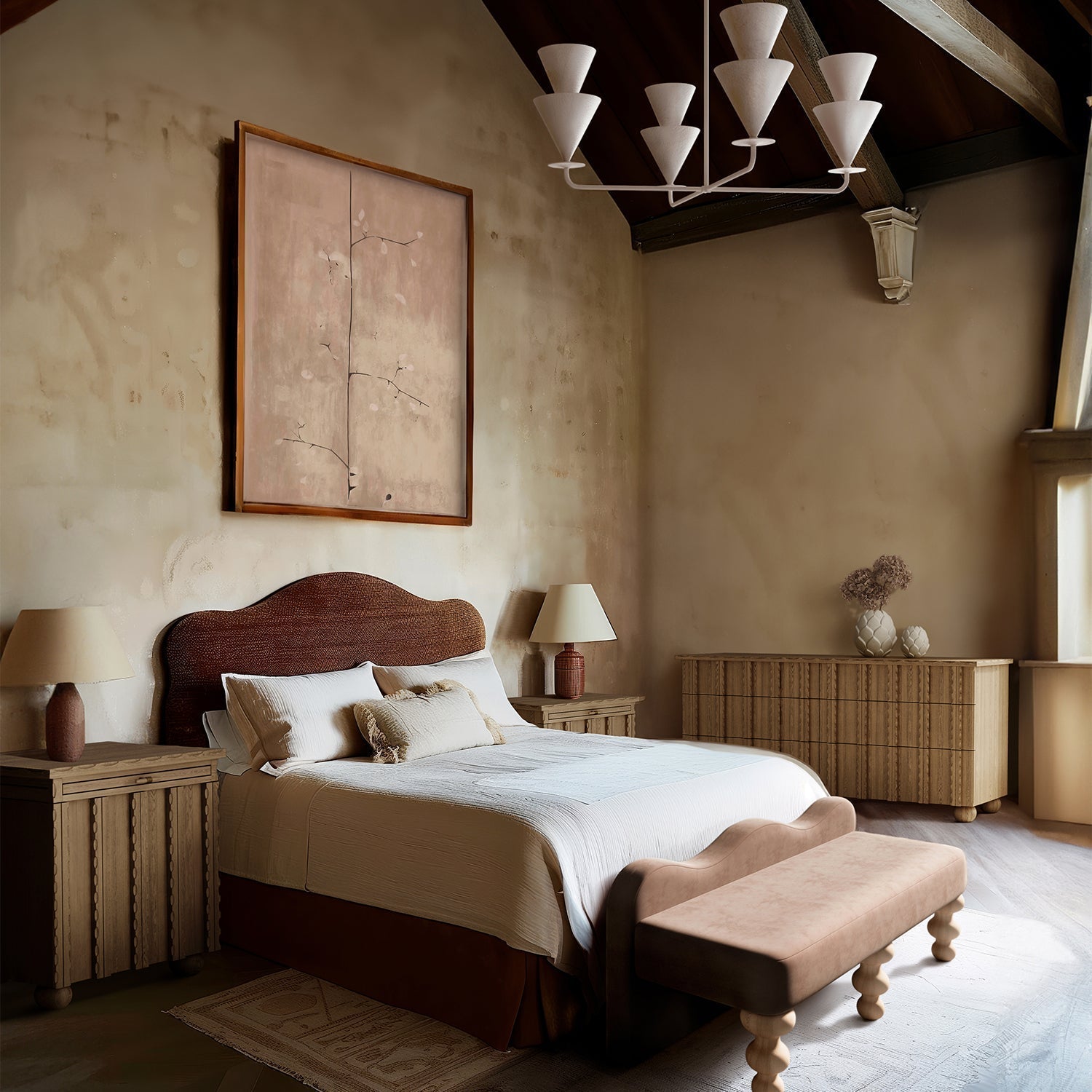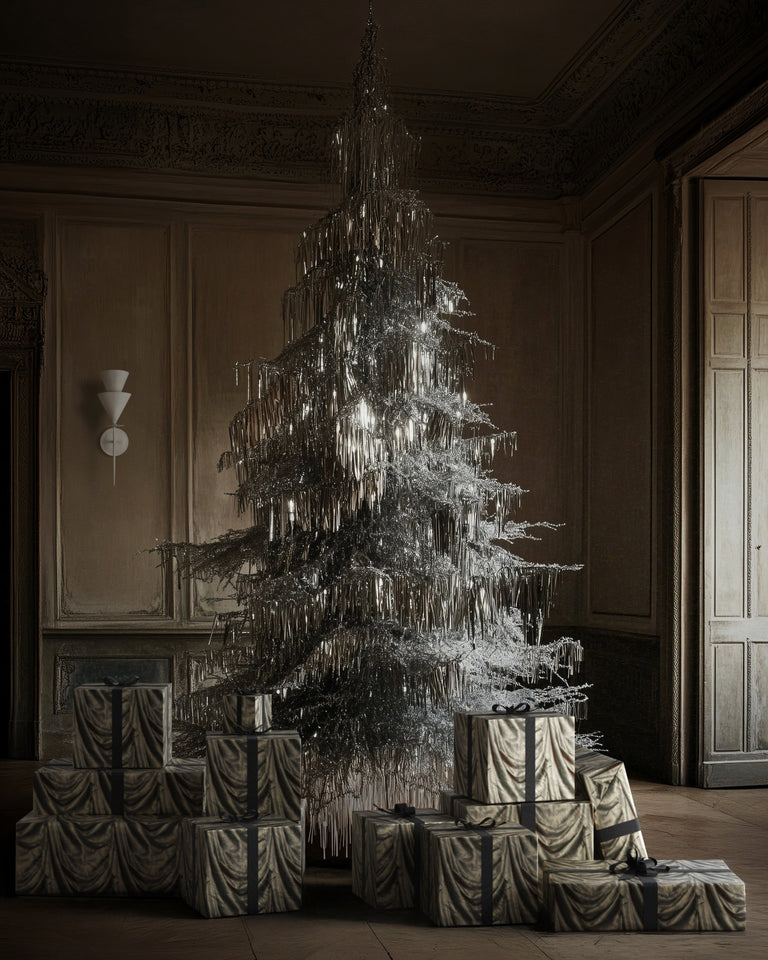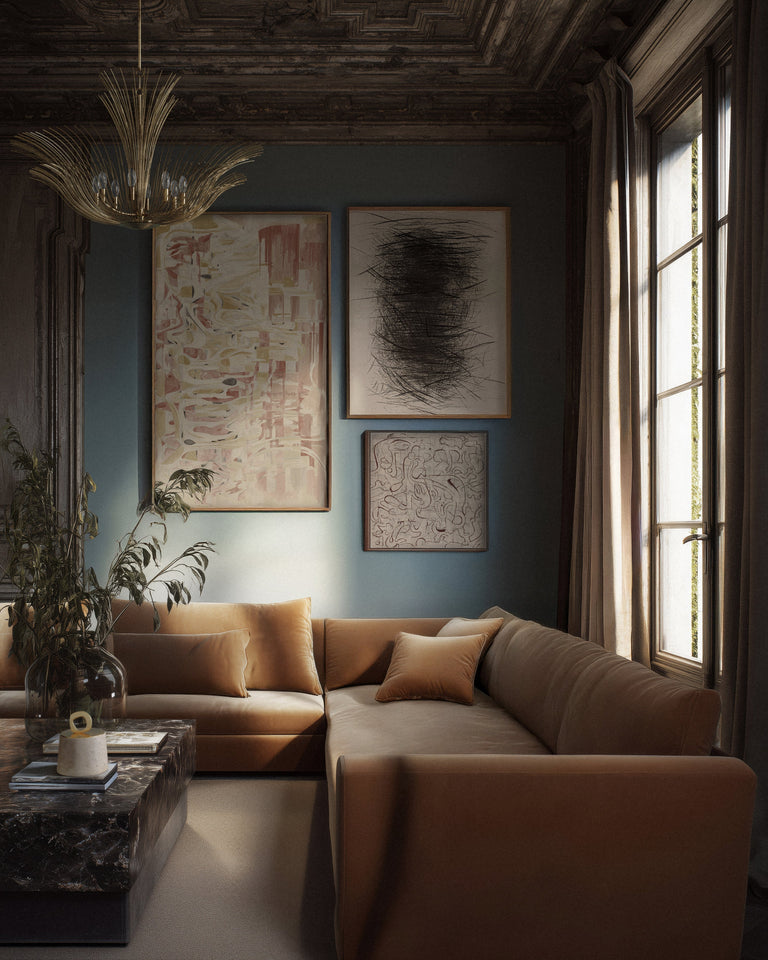
The Art of the Gouge: How Jean-Michel Frank Redefined the Beauty of Imperfection
June 4, 2025
In the grand narrative of furniture design, few pieces have proven as revolutionary as Jean-Michel Frank's extraordinary 1932 cabinet, co-designed with Adolphe Chanaux. What began as a radical departure from the refined minimalism Frank was known for would ultimately reshape our understanding of how texture, light, and human craft could collaborate to create enduring beauty.
A LEGACY BORN FROM RADICAL TECHNIQUE
The year was 1932, and Frank was already established as the master of sophisticated restraint. His interiors for clients like Nelson Rockefeller and Templeton Crocker had defined a new aesthetic—one where luxury meant elimination rather than accumulation. Yet this cabinet represented something entirely different: a piece that celebrated rather than concealed the raw power of material transformation.
Working alongside the master ébéniste Adolphe Chanaux, Frank created a storage piece whose gouged oak surface seemed to channel the very forces of artistic revelation. The deep, irregular channels carved into the wood's surface created a landscape in miniature—a topography that caught light and shadow with the same drama as a mountain ridge sculpted by centuries of wind and weather.
This wasn't mere decoration; it was a fundamental rethinking of what sophisticated furniture could be. The piece challenged every assumption about refinement, suggesting that true elegance might emerge not from flawless surfaces, but from the controlled celebration of the craftsperson's hand.
Frank understood something profound: that the same passionate energy that drove sculptors to carve marble could be harnessed in the service of functional beauty. The gouged surface wasn't fighting the wood's natural character—it was revealing it

Photography credit: ECART International
THE FRENCH MASTERY: WHERE TECHNIQUE MEETS PHILOSOPHY
As with so many innovations in design, Frank's textural revolution found its most sophisticated expression in the French tradition of understanding materials as collaborators rather than mere substrates. French ébénistes of the era possessed a unique appreciation for the conversation between hand, tool, and wood—recognizing that true craftsmanship emerged from dialogue rather than domination.
The gouging technique that made Frank's cabinet so revolutionary required extraordinary skill. Unlike smooth finishes that could hide minor imperfections, textured surfaces revealed every gesture, every decision. The craftsperson's expertise became visible in the rhythm of the channels, the consistency of depth, the way light moved across the undulating surface.
This was woodworking as choreography—each gouge a deliberate movement in a larger composition. The French workshop tradition provided the technical foundation, but Frank's vision transformed technique into art.
BEYOND MINIMALISM: THE BIRTH OF TEXTURAL MODERNISM
Frank's influence on contemporary design cannot be overstated. The principles he established in that 1932 cabinet would gradually transform how designers approached the relationship between surface and light, between perfection and beauty, between modernism and craft.
The textural aesthetic that Frank pioneered—surfaces that celebrated rather than concealed their making—represented a third path between ornate traditionalism and sterile modernism. Here was furniture that felt both ancient and thoroughly contemporary, both sophisticated and deeply human.
This represented a fundamental shift in thinking about luxury. Rather than creating pieces that demonstrated wealth through pristine perfection, Frank suggested that true sophistication might emerge from the honest celebration of human skill.

Photography credit: ECART International
THE CONTEMPORARY RENAISSANCE: HERITAGE MEETS INNOVATION
Today's finest furniture represents a return to Frank's founding insight—that enduring beauty emerges from the marriage of masterful technique and authentic expression. Contemporary pieces that trace their lineage to that 1932 cabinet achieve something remarkable: they feel both timeless and urgently relevant.
The best examples of this tradition understand that texture serves multiple purposes. Visually, it creates surfaces that change throughout the day as light shifts and moves. Practically, it provides a durability that smooth surfaces cannot match—small marks and natural wear become part of the piece's character rather than damage to be regretted.
Emotionally, textured surfaces invite touch, creating a tactile relationship between object and owner that smooth finishes simply cannot provide.
FORM, FUNCTION, AND THE ART OF THE HUMAN HAND
What makes Frank-inspired textural work exceptional isn't just its visual impact—it's how that texture enhances the entire experience of living with beautiful furniture. The gouged surfaces create pieces that reveal new details over years of daily interaction, furniture that rewards attention with discovery.
The finest examples share certain characteristics: they're proportioned for human scale, they feel intentional rather than arbitrary in their surface treatment, and they demonstrate the kind of technical mastery that only comes from years of dedicated practice. Most importantly, they honor the material—the texture emerges from an understanding of what the wood wants to become.

MATERIALS MATTER: THE CARVED TRADITION
Like all exceptional furniture, pieces in the Frank tradition are distinguished by their understanding of materials. The gouging technique requires wood with particular characteristics—grain that will support deep cutting without splitting, density that allows for crisp edges, character that improves rather than deteriorates under aggressive working.
The carved details themselves—far from being merely decorative—serve to reveal the wood's essential nature. They create opportunities for the natural variations in grain and color to express themselves, turning what might be seen as "imperfections" into the piece's most beautiful features.
This is where handcrafted construction proves its profound worth: in the understanding that technique should serve to reveal rather than impose, to collaborate with material rather than master it.
THE MARCHAND INTERPRETATION: HERITAGE MADE CONTEMPORARY
Our Marchand 4-Door Handcrafted Walnut Sideboard represents a direct descendant of Frank's revolutionary vision, adapted for contemporary living. Each piece showcases the same commitment to textural sophistication that made Frank's work so influential, translated into forms that serve modern interior design.
The elegantly scalloped edge detailing that defines each Marchand piece echoes the gouged surfaces of Frank's original cabinet, creating visual texture that catches interior light with the same drama as its 1932 predecessor. The hand-carved door fronts tell their own stories—subtle variations that ensure no two pieces are identical, acknowledging that authentic handwork celebrates rather than conceals the human element.
Resting on thoughtfully proportioned turned legs, the Marchand achieves that coveted balance between classical European heritage and contemporary sophistication. The traditional mortise-and-tenon joinery, reinforced with hand-driven dowels, represents construction methods specifically chosen for their ability to support the aggressive surface treatment while maintaining structural integrity for generations.
In an era where furniture often means choosing between character and quality, between handcraft and durability, the Marchand stands as quiet proof that the finest pieces serve not just the room, but the soul of sophisticated living.

THE FUTURE OF TEXTURAL DESIGN: TECHNIQUE AS POETRY
As our understanding of craftsmanship deepens and our appreciation for handmade objects grows, Frank's core insight becomes increasingly relevant. We need furniture that doesn't just fill space but enriches it—pieces that develop character through time rather than losing refinement through use.
The textural tradition that Frank pioneered offers something unique in contemporary design: the promise that human skill, honestly expressed, creates beauty that improves with age. It's this quality that has ensured the survival of gouging techniques from 1932 workshops to today's most sophisticated ateliers.
The gouged surface speaks to something fundamental in human nature—our need for texture, for evidence of the hand, for proof that beauty can emerge from the marriage of skill and vision. In Frank's cabinet, and in its contemporary descendants, we see not just furniture but philosophy made manifest: the idea that imperfection, when guided by mastery, becomes more beautiful than perfection ever could.
Form, function, and the frank beauty of technique honestly expressed.
Discover our complete collection of textured pieces, where Frank's revolutionary vision meets contemporary craftsmanship. Each piece represents our commitment to furniture that serves not just the space, but the experience of living with enduring beauty.
Recent Edits





